Do you have a question about whether or not hummingbirds can fly in the rain? You’re not alone! This is a common question that many people have. In this epic guide, we will answer all of your questions about hummingbirds and rain. We’ll provide useful tips on whether or not these birds can handle wet weather, and share some interesting facts about their flying abilities. So, read on to learn more!
Table of Contents
Hummingbirds and Their Behavior
Hummingbirds feed mainly on nectar, although some species also eat insects, spiders, and other tiny prey. Their long beaks are specially adapted for collecting nectar from deep-throated flowers. To help them conserve energy, hummingbirds often enter a state of torpor at night in which the heart rate and body temperature drop significantly. This reduces their metabolic needs significantly until they can find food again during the day.
Hummingbirds are among the most colorful birds in nature with vibrant iridescent feathers that shimmer in bright sunlight. By hovering around flowers they can take advantage of ultraviolet light to see an even wider range of colors than humans can perceive. They are also among the most vocal songbirds, making chirping noises to defend their territories and attract mates.
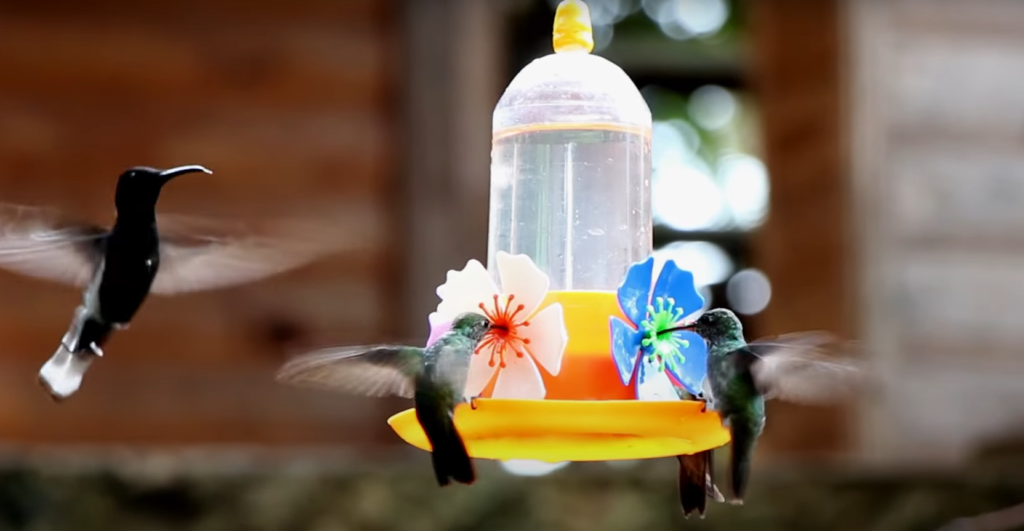
The greatest diversity of species is found in temperate rainforests, but they also inhabit grasslands, deserts, savannas, and tropical forests. Their small size and highly mobile lifestyle make them difficult to observe in the wild so much of what we know about them comes from captive observations or monitoring by researchers. [1], [2], [3], [4], [5]
Do Hummingbirds Fly In The Rain?
Many people wonder whether hummingbirds can fly in the rain. The answer to this question is yes, hummingbirds are able to fly in the rain but they prefer not to because their feathers become wet and heavy, making it more difficult for them to hover and maneuver. For this reason, hummingbirds typically avoid flying during periods of heavy or prolonged rainfall and will instead look for shelter.
Despite their dislike of rainy weather, some species of hummingbird are actually able to survive being soaked by brief showers. In fact, these have little to no effect on them!
They have water repellant feathers that allow them to remain relatively dry even when exposed to light precipitation. But if a storm persists for too long or there is lightning or thunder present, then hummingbirds may need to find refuge from the elements.
So, as fragile as they may appear, hummingbirds are well adapted to the environment and can survive short downpours. [1], [2], [3], [4], [5]
Can They Fly When Wet?
Still, no protection is guaranteed and hummingbirds may become wet if they are caught in the rain. And not only that, sprinklers, waterfalls or other water sources can also get them wet. In such cases, it is important to take into account that their feathers become heavier when they are wet, so it takes more energy for the birds to fly and maneuver in the air.

Luckily, as many other birds, hummingbirds can simply shake off the excess water from their feathers and they will be able to fly again. When their feathers dry up, they regain their original weight and aerodynamics, which makes it easier for them to stay in the air. However, if a hummingbird is soaked for too long or has been wet for an extended period of time, then its feathers may not completely dry in a short time. [1], [2], [3], [4], [5]
How Do Hummingbirds Fly When It Rains?
We already slightly touched the topic as to why hummingbirds don’t like to fly in the rain, but let’s go into a bit more detail. Mother nature has gifted hummingbirds with some of the most impressive abilities to fly among all bird species. In fact, they’re able to power themselves through the air by flapping their wings up to 80 times per second! When rain comes down, it can make it difficult or even impossible for a hummingbird to fly, however they have situations like this covered too.
Their feathers
Hummingbirds are covered head to toe in feathers. Feathers, of course, give birds their distinct look and feel but they also serve an important purpose – protection from the elements. Like with the majority of the birds, feathers do a great job at repelling water and providing insulation, but surprisingly they aren’t enough to completely shield the hummingbirds from heavy rains.
Yes, their feathers aren’t 100% waterproof as with ducks, but they protect hummingbirds from some of the elements like rain. When it rains lightly, the feathers help to keep them dry and allow them to fly without much bother.
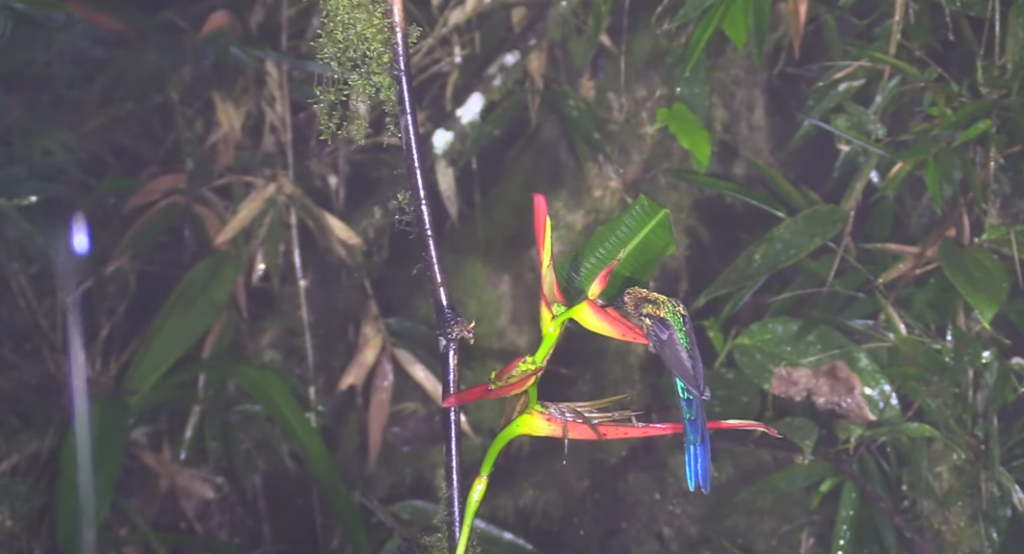
They have an ability to shake off the moisture
Hummingbirds are able to shake off most of the moisture from their feathers and after this they’re ready to fly again. To achieve that, they clamp down on a branch with both feet and start flapping their wings at full speed. This way every drop of rain is shaken off their feathers and within seconds the hummingbird is already prepared for take-off!
And the most impressive part of this, is that they can shake off nearly all the moisture while during the flight. This technique, combined with their own fast flying speed and agility, allows them to stay dry even during heavy rain falls.
Kinematics of flight
Hummingbirds are equipped with some impressive flying abilities, but why can’t they fly in the rain? It all comes down to a concept called kinematics. Kinematics is the science of motion and how objects interact with each other while in motion. Raindrops have mass, just like a hummingbird’s wings, and when these two collide it can cause turbulence that makes it difficult for a hummingbird to keep flying.
When in rain, hummingbirds adapt their body position in order to reduce the effect of raindrops on their wings. By angling their bodies in such a way that the rain drops glide down the side, rather than directly hitting the wings, they can continue flying in light rainfall. When it’s heavier, however, they are forced to land and find shelter until the storm passes by.
Many people ask whether a raindrop can ever kill a hummingbird. After all, these birds are tiny! Well, luckily for them – no, a single raindrop can’t kill a hummingbird. These talented creatures can simply absorb the impact of the raindrops and fly away unharmed. [1], [2], [3], [4], [5]
Hummingbirds and the Cold Weather
So now we know that hummingbirds can fly in the rain, but what about the cold weather? The answer is that yes, they can and do fly in the cold. Nature has also given them some special adaptations to help them survive those cooler temperatures, so let’s discuss those!
Insulating feathers
Hummingbirds have feathers that are specially adapted to keep them warm during cold weather. Their feathers create a layer of insulation around the body, trapping in heat and allowing them to remain active even when temperatures drop below freezing.
Additionally, their wings are shaped differently than those of other birds. This shape helps them to generate more lift as they fly through colder air, enabling them to take off and maintain flight in colder conditions.
The body temperature of hummingbirds is also pretty impressive! They can maintain a body temperature of 104°F even in cold weather, allowing them to remain active and feed on nectar.
Of course, just like other birds, hummingbirds can fluff up their feathers when the temperature drops to stay warm, but they also have other tricks. For example, some hummingbirds may enter a state of torpor—essentially slowing down their metabolic rate and reducing body temperature in order to conserve energy.
Torpor state
One of the most important adaptations hummingbirds have is their ability to go into a state known as torpor. This is when they slow down their body functions and metabolic rate, thereby allowing them to conserve energy and stay warm while in cooler conditions. To conserve the most of their energy, hummingbirds need to lower their temperature by 50 degrees Fahrenheit and reduce their heart rate by 90-95%. This is an incredibly impressive feat, considering they are so small.
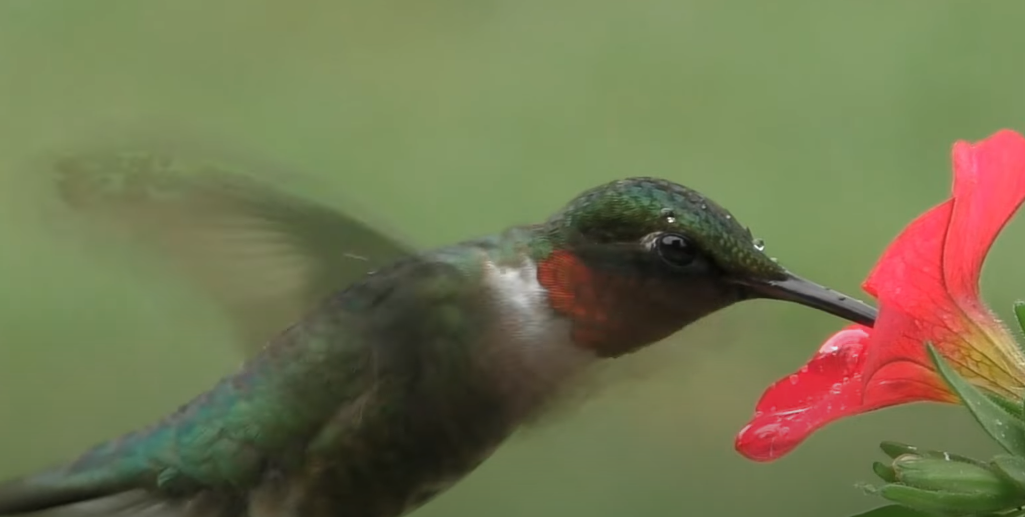
You might see hummingbirds hanging from branches looking as if they’re lifeless, but that’s actually just the torpor state they have gone into. To wake them up and get them flying again, all you need to do is give them access to some food and they should spring back to life instantly!
Shivering
Lastly, hummingbirds are able to shiver. It may look like they’re shaking off water droplets, but what they’re actually doing is generating heat! They can do this thanks to their incredibly fast metabolism (they have the highest of any vertebrate animal on the planet!) By increasing their body temperature with shivering they can stay warm in even the coldest temperatures.
They also shiver after waking up which is thought to help them generate enough energy to take off and fly. This way they awaken their muscles, get their heart rate up, and increase their body temperature all at once. [2]
Hummingbirds and Storms
So hummingbirds can fly in the rain, but what about other types of weather like storms? The best thing for hummingbirds to do when a storm is approaching is to find shelter. They will usually hide in tree hollows or dense shrubs until the storm passes.
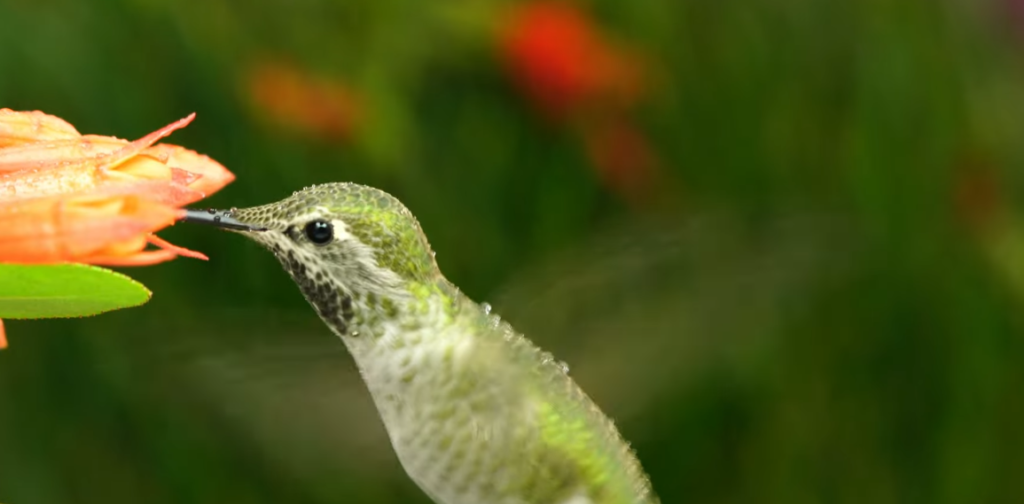
Hummingbirds have an impressive grip on branches, and they are also quite nimble in flight. This means that they are capable of maneuvering around even during stormy conditions. However, it is not a recommended course of action since storms can be unpredictable and pose numerous dangers to the tiny birds. [1]
FAQ
Do hummingbirds stop flying at night?
No, hummingbirds do not stop flying at night. During long migrations and in the winter months, some species of hummingbirds may migrate at night to conserve energy. In general though, they are active during the day when they are able to feed on flowers and insects for food. It is important to note that many species of hummingbirds will rest at night, but this does not mean that they have stopped flying altogether.
Do hummingbirds mind the rain?
Not really. While rain can be uncomfortable for them, hummingbirds are generally able to fly in light rain and keep themselves well insulated from the elements with their feathers. In heavy rain, however, the small birds may find it difficult to stay airborne due to the wetness and weight of their feathers. They will usually seek shelter if they encounter a downpour or persistent showers that make flying more difficult.
Hummingbirds also have specially adapted wings that allow them to hover and remain still in windy conditions that could otherwise blow them away. This is especially true when they’re drinking nectar from flowers while it’s raining. The ability of the wings helps protect hummingbirds against being caught off guard by gusts of wind or sudden bursts of water droplets. And if they do get wet, they can easily shake off the moisture and be on their way.
It’s also worth noting that hummingbirds can often find shelter in trees, shrubs, or even under leaves during a rainstorm. This gives them an extra layer of protection while they wait out the wet weather.
Do hummingbirds take shelter from the rain?
Yes, hummingbirds do take shelter from the rain.
When the weather is especially severe, they may even seek out sheltered spots such as caves and crevices in rocks.
The main precaution that hummingbirds take when it rains is to reduce their activity level dramatically. This allows them to conserve energy since flying through wet air can be more difficult than flying through dry air. In addition, many hummingbird species have a water-repellent coating on their feathers which helps protect them from the rain.
Still, while hummingbirds can withstand a light rain, they may be forced to take shelter during a heavy downpour. In such cases, it is best to provide hummingbirds with a dry area where they can find respite from the wet weather. You can do so by setting up an artificial birdhouse or simply leaving some branches sheltered from the rain.
Do hummingbirds fly in the wind?
Hummingbirds have the unique ability to hover, fly sideways, and even fly backwards thanks to their extra-flexible wings. This makes them particularly adept at flying in windy conditions. Because of this, hummingbirds are able to fly in light breezes with no problem. However, if wind speeds become too strong for hummingbirds to maintain steady flight, they will often seek shelter from the gusts by seeking out a tree or bush and perching there until the wind dies down.
Can Hummingbirds fly in the rain?
Yes, hummingbirds can fly in the rain. Despite their tiny size and fragile appearance, these birds are incredibly resilient and have adapted to be able to handle even the harshest weather conditions. Hummingbirds have a special adaptation to the rain: their feathers can repel water, helping them stay dry and fly through wet conditions. In addition, they have an ability to shake off the moisture during mid-flight, ensuring they don’t get weighed down.
However, while hummingbirds can fly in the rain they typically avoid doing so when possible. Heavy rains or storms can make it difficult for them to find food sources as many of their favorite flowers may close up due to excess moisture or winds. Additionally, flying in the rain requires more energy than normal since they must battle against the elements. For these reasons, most hummingbirds seek shelter until the storm passes and only fly out when absolutely necessary.
Do hummingbirds sleep while flying?
No, hummingbirds do not sleep while flying. While they may appear to be motionless in mid-air, hummingbirds are actually continually flapping their wings at an incredibly fast rate. This is how they are able to hover and stay in the same place for a period of time. In order to rest, these birds must perch on a branch or other structure where they can slow down their metabolism and conserve energy until it’s time to fly again.
This state is called torpor and it is a form of hibernation. During torpor, the hummingbird’s heart rate and body temperature drop, allowing them to conserve energy until they are ready to start flying again.
Useful Video: Hummingbirds flying in the rain
Conclusion
Hummingbirds are one of the most bizarre and fascinating creatures in the animal kingdom. They have an amazing range of adaptations and abilities that enable them to survive in almost any environment – including rain. So, yes, hummingbirds can fly in the rain – but only for brief periods of time and when absolutely necessary. If you do witness a hummingbird flying in bad weather, take the opportunity to admire its dedication and perseverance.
Small showers won’t bother hummingbirds at all, however, heavy rain can be harsh to them. Luckily, hummingbirds have water-repellant feathers and oil glands that help keep them dry. Additionally, they can simply shake off any water droplets that have collected on their feathers.
And they can withstand cold weather as well as long as they are able to find a sheltered spot. Also, if temperatures dip too low and the conditions become unbearable for them, hummingbirds can enter into a state of torpor that helps conserve energy and protect them from the elements until things become more favorable again.
Hummingbirds are truly amazing creatures, and it’s wonderful to be able to host them in our gardens! By understanding their needs in various weather conditions we can help them survive – no matter what Mother Nature throws at them!
References
- https://watchingthebirds.com/what-do-hummingbirds-do-when-it-rains/
- https://www.birdinformer.com/do-hummingbirds-fly-in-the-rain/
- https://wxresearch.org/where-do-hummingbirds-go-when-it-rains/
- https://insider.si.edu/2012/07/video-shows-how-hummingbirds-adjust-to-flight-in-heavy-rain
- https://www.9news.com/article/tech/science/hummingbird-facts-from-a-man-getting-his-phd-studying-them/73-a6a379bf-3341-4658-81e3-a9fc3cb405a1


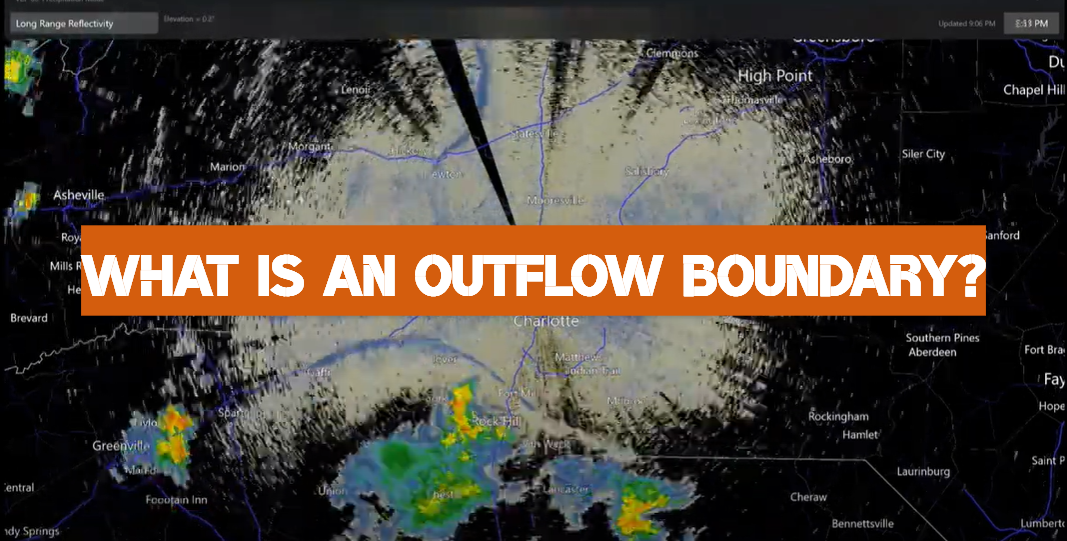



Leave a Reply